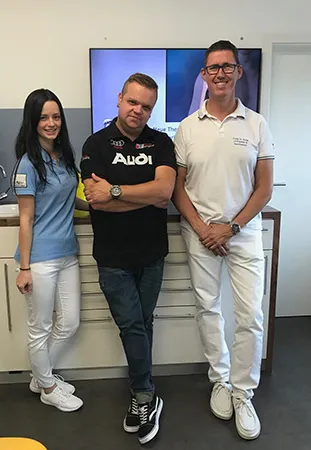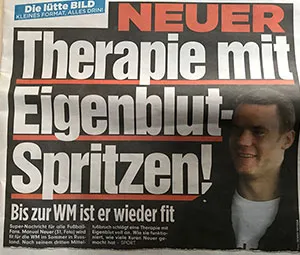
Today we celebrated a very special anniversary. We were pleased to welcome our 50,000th patient to our practice.
In 2004, I joined Dr. Lück's practice in Saarlouis, which I then took over completely in 2006.
In the years since 2004, we have reached the incredible number of 50,000 patients.
The new General Data Protection Regulation (GDPR) has been in effect since the end of May. We are committed to protecting our patients' personal data.
Information on data protection in our practice can be found in the Data Protection Information Sheet, which you can download from our download area.
Our website has also been updated. Many people may not notice the small symbol of a closed padlock in the browser's address bar. It indicates an encrypted connection, which offers a significant increase in data security for our users.
Our website has been redesigned as of today.
Many people may not notice the small symbol of a closed padlock in the browser's address bar. It indicates an encrypted connection, which offers a significant increase in data security for our users.
From now on, all data will be transmitted via an encrypted connection, making it virtually impossible for third parties to intercept it.
To obtain this certificate, we underwent a complex certification process.

The Bild newspaper reports in large print about Manuel Neuer's autologous blood therapy.
Autologous blood therapy is one of the modern treatment methods in alternative medicine. In this procedure, the patient's own blood is taken, processed in various ways, and then injected again.
Scientific studies have shown that the growth factors contained in human blood can positively influence healing processes. These findings are used in the application of this autologous blood therapy to achieve improvements in pain and healing, as well as mobility.
This therapy is not only used for professional athletes to get them fit and performing faster. We also use this innovative therapy method in our practice for various medical conditions.
In our practice, we use autologous blood therapy with autologous conditioned plasma (ACP).
This can be used to effectively treat injuries to muscles, tendons, ligaments, and articular cartilage. Treatment with so-called autologous growth factors in patients with orthopedic/sports medicine diseases and injuries is becoming increasingly important in both conservative and surgical settings.
Numerous clinical studies and observational studies in the literature show that the use of autologous platelet concentrates/growth factors can positively influence various healing and regenerative processes. It has now been proven that the ACP procedure increases both the density of platelets (blood platelets) and the concentration of growth factors compared to whole blood. After taking a small amount of venous blood (10 ml) (usually from the arm vein), a special separation process (centrifugation) is performed. This allows the portion of the blood containing the body's own regenerative and, for example, anti-arthritis components to be extracted. A specially developed double syringe ensures sterile extraction and sterile injection of the growth factors.
The effect of ACP therapy is based on the release of growth factors from the platelets. These can initiate self-healing and regenerative processes at the affected sites where an injection is made, activating various cell types.
In our practice, we have achieved particularly good results in acute and chronic tendon injuries. These include, for example, tennis elbow or patellar tendonitis. This therapy can also be used for muscle fiber tears or joint osteoarthritis.
This year, my visit to the 34th AGA Congress once again provided me with some new insights and tips that will influence my daily work.
New treatment algorithms were presented, particularly for the treatment of shoulder instability. In addition to injury to the cartilaginous labrum and ligaments, bone damage is particularly important. Problematic in this regard are disruption of the glenoid cavity and the Hill-Sachs lesion.
A Hill-Sachs lesion is a collapse of the humeral head that frequently occurs after shoulder dislocations.
A Hill-Sachs lesion can lead to recurrent dislocations during various movements. The situation becomes particularly critical when there is a deformity of the glenoid cavity. This promotes instability and can massively increase the risk of dislocation.
To better assess the risk and select the appropriate treatment for each individual patient, various criteria are assessed. An important aspect here are the so-called on-track and off-track lesions. These can be determined based on the location and size of the Hill-Sachs lesion and the shape of the acetabulum.